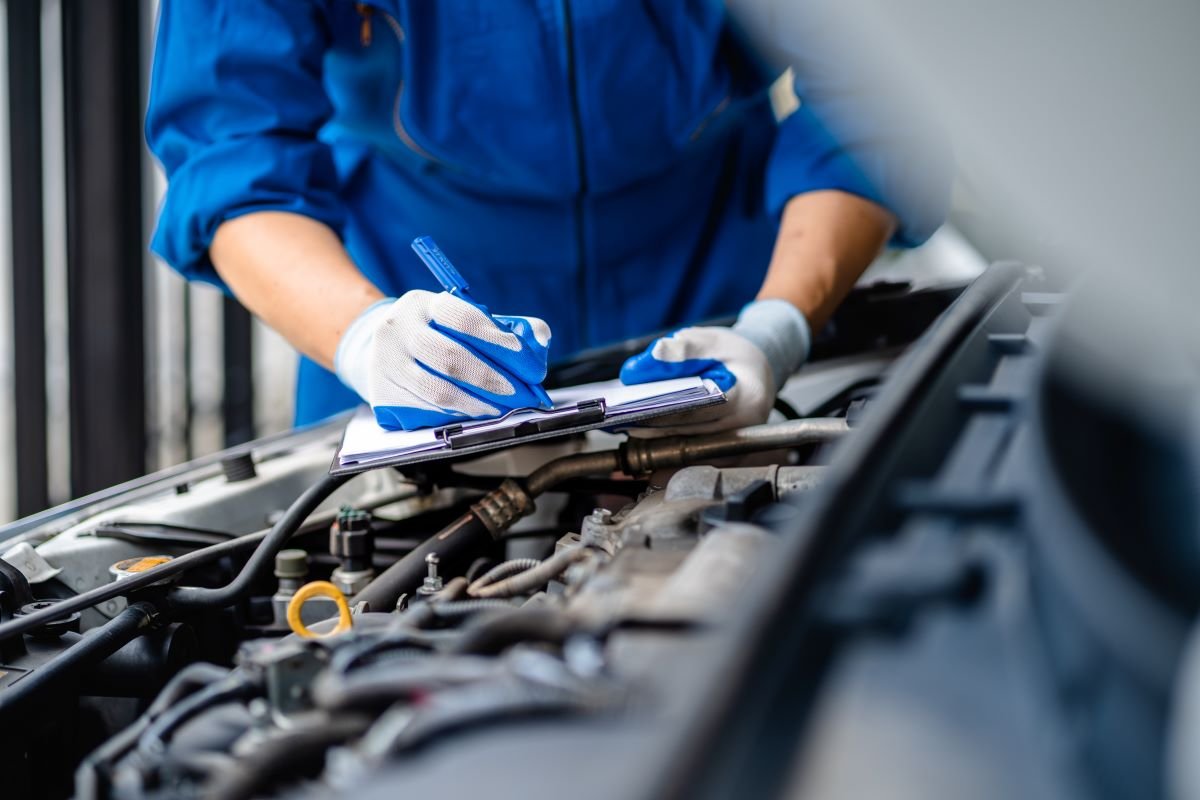
Industry News

Avoid Audit Nightmares with Properly Classified Tree Care Industry Equipment and Vehicle Maintenance Operations
Author, Rory Anderson, Account Executive, Rancho Mesa Insurance Services, Inc.
Tree care companies use specialized vehicles and equipment to perform their work. These assets are vital to the success of the company. To maintain their effectiveness, the machines need routine maintenance and upkeep. Issues arise when they break down, so it’s important to repair them immediately to limit business interruptions such as decreased productivity and profitability. The maintenance of the machinery can be a full time job, and some tree care businesses are lucky enough to have an employee, or a team of employees, dedicated to shop maintenance.
Author, Rory Anderson, Account Executive, Rancho Mesa Insurance Services, Inc.
Tree care companies use specialized vehicles and equipment to perform their work. These assets are vital to the success of the company. To maintain their effectiveness, the machines need routine maintenance and upkeep. Issues arise when they break down, so it’s important to repair them immediately to limit business interruptions such as decreased productivity and profitability. The maintenance of the machinery can be a full time job, and some tree care businesses are lucky enough to have an employee, or a team of employees, dedicated to shop maintenance. This type of work is a specialized skill and represents a key role within the organization. The intent of this article is to define how to properly classify these operations, so your company is prepared for any issues that may come up at the audit.
Workers’ Compensation
The Workers’ Compensation Insurance Rating Bureau (WCIRB) has created a specific class code for the maintenance of equipment and vehicles: 8227 Construction or Erection of Permanent Yards of Shops, which ONLY applies to the construction industry. In Appendix I, the WCIRB defines which industries are considered construction. Tree care, is not included on this list. Therefore, the WCIRB says, you must classify these operations in the governing class code, which is 0106 Tree Trimming, Repairing or Trimming. In fact, the WCIRB’s definition for 0106 Tree Pruning, Repairing or Trimming states that shop and yard storage operations are included: “TREE PRUNING, REPAIRING OR TRIMMING — N.O.C. — hand or mechanical power — including ground crews and shop, yard or storage operations.”
General Liability
Unlike workers’ compensation, in the tree care industry there is a general liability (GL) class code dedicated to the employees that are working on the maintenance of their own vehicles and equipment: 91590 Contractors Permanent Yards – Maintenance or Storage of Equipment or Material. It’s important to note that this class code does not consider maintenance or repairs on machinery or equipment other than those owned by the tree care company. The use of this code on your policy can be beneficial because the rate is usually cheaper than the tree care GL rate: 99777 Tree Pruning, Dusting, Spraying, Repairing, Trimming or Fumigating. So, it is safe to split payroll between these two class codes accordingly. Remember to keep proper records segregating the wages earned by your employees.
Overall, maintenance and repair employees are essential for maintaining the operational effectiveness, safety, and profitability of a tree care company. It is important to understand how to properly classify your equipment and vehicle maintenance operations so you can align your insurance policies correctly and avoid costly mistakes at the audit.
If you have questions or would like me to audit your current policies, please reach out to me at (619) 438-6437 or randerson@ranchomesa.com. I’m happy to help!
Don’t Get Skunked: Properly Insuring Large Tree Care Equipment
Author, Rory Anderson, Account Executive, Rancho Mesa Insurance Services, Inc.
These days, everything is more expensive. Between inflation and supply chain issues, the cost of equipment is steadily increasing. As the tree care industry becomes more mechanized, we see new technological advancements in machinery and equipment that are greatly improving the productivity, profitability, and safety of the industry. These big ticket equipment purchases are a major investment for a tree care business. It is important to make sure that your assets are insured correctly so you can rest easy knowing that if something were to happen to them, you are properly covered. This can provide financial protection and affirm business continuity.
Author, Rory Anderson, Account Executive, Rancho Mesa Insurance Services, Inc.
These days, everything is more expensive. Between inflation and supply chain issues, the cost of equipment is steadily increasing. As the tree care industry becomes more mechanized, we see new technological advancements in machinery and equipment that are greatly improving the productivity, profitability, and safety of the industry. These big ticket equipment purchases are a major investment for a tree care business. It is important to make sure that your assets are insured correctly so you can rest easy knowing that if something were to happen to them, you are properly covered. This can provide financial protection and affirm business continuity. There are two important factors to remember when scheduling equipment with your insurance broker:
1. Insurance Valuation: Replacement Cost or Actual Cash Value
In insurance, there are a few ways to value equipment, most commonly replacement cost (RC) and actual cash value (ACV). RC is the cost new today, without factoring in depreciation. ACV is the depreciated value (ACV = RC – depreciation). If you have a total loss on a piece of equipment that was rated on ACV, the insurance company will factor in depreciation when determining the payout amount, so you may not receive enough money to replace your equipment with a new item. With inflation and recurring supply chain issues over the past few years, tree care equipment is hard to get and more expensive.
For example, a 2020 chipper costs more new today than it did in 2020. Replacement cost coverage takes this into account by providing coverage for the current cost of replacing your equipment with a new item at current market rates. We recommend that you have the carrier provide replacement cost coverage on all items, so look for that definition when reviewing with your broker.
2. Equipment Valuation
Secondly, it is critical that you execute a pre-renewal meeting with your insurance broker. In that meeting, your broker should be asking you to review the equipment values and make adjustments where necessary, appropriate to the true valuation. As discussed, equipment values are steadily increasing. Therefore, it is imperative that you are increasing those values on the upcoming policy term to be certain you will get the most money back in the event of a claim.
Properly insuring your assets is a fundamental aspect of your risk management program. It is crucial for protecting your company’s financial stability, business continuity, and safeguards your reputation and operational stability. If you have questions about properly insuring your equipment, please reach out to me at (310) 753-6804 or randerson@ranchomesa.com.


